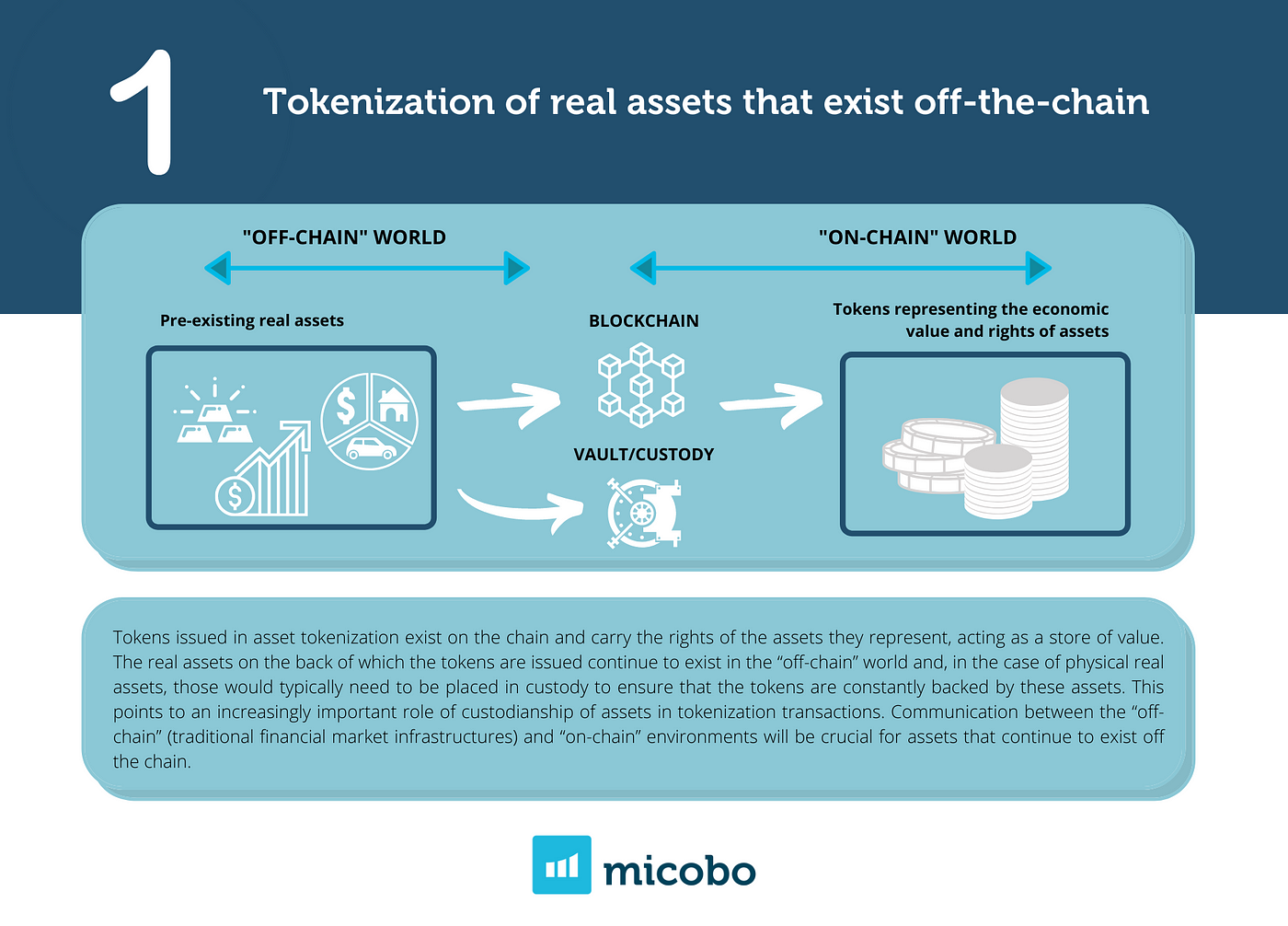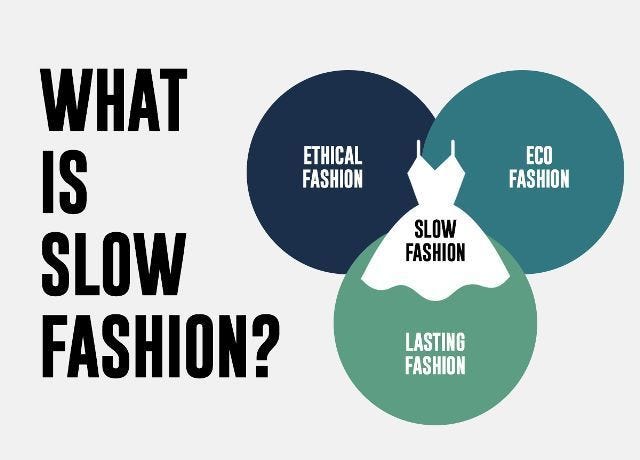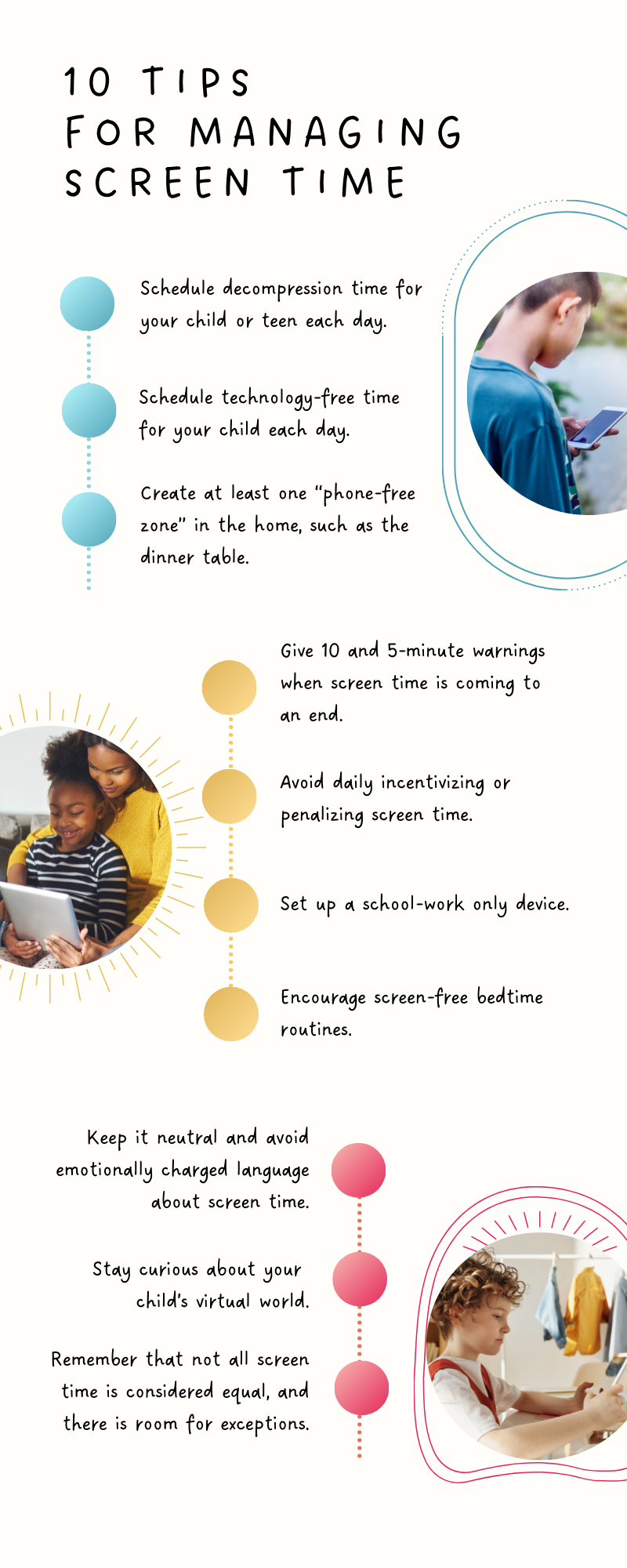Sustainable Materials Building a Greener World
The Growing Urgency for Sustainable Building Materials
Our planet is facing an unprecedented environmental crisis, largely fueled by unsustainable practices across various sectors. The construction industry, a significant contributor to greenhouse gas emissions and resource depletion, needs a radical shift towards sustainability. The demand for housing and infrastructure continues to rise globally, placing even greater pressure on our natural resources. This necessitates a move away from traditional, environmentally damaging materials and practices towards a more responsible approach that minimizes the industry’s ecological footprint.
Embracing Sustainable Alternatives: Timber’s Resurgence
Timber, a naturally renewable resource, is experiencing a well-deserved comeback in the construction world. Engineered wood products like cross-laminated timber (CLT) offer high strength and versatility, making them suitable for a wide range of applications, from residential buildings to high-rises. Sustainable forestry practices, emphasizing replanting and responsible harvesting, are crucial to ensuring the long-term viability of timber as a sustainable building material. Moreover, timber sequesters carbon dioxide during its growth, acting as a carbon sink and offsetting some of the emissions associated with construction.

Bamboo: A Rapidly Renewable Wonder Material
Bamboo, a fast-growing grass, boasts exceptional strength and flexibility, making it an excellent alternative to traditional lumber. Its rapid growth cycle allows for continuous harvesting without depleting resources, making it a truly sustainable choice. Bamboo requires minimal processing, reducing its environmental impact further. It’s also incredibly versatile, adaptable to various building applications, from flooring and scaffolding to entire structures. This makes it a highly attractive option for eco-conscious builders and homeowners alike.
Recycled and Reclaimed Materials: Giving Waste a New Life
The construction industry generates a massive amount of waste. However, much of this material can be repurposed and reused. Recycled steel, for instance, requires significantly less energy to produce than virgin steel, reducing its carbon footprint. Reclaimed wood, salvaged from demolition sites or old structures, adds character and charm while diverting waste from landfills. Similarly, recycled aggregates like crushed concrete can replace virgin aggregates in concrete production, minimizing the need for quarrying.
The Rise of Hempcrete: A Natural and Sustainable Insulator
Hempcrete, a composite material made from hemp hurds (the woody core of the hemp plant) and lime binder, offers excellent insulation properties. Its natural breathability helps regulate indoor humidity, creating a comfortable and healthy living environment. Hemp is a rapidly renewable crop, requiring minimal pesticides and herbicides, and its cultivation can even improve soil health. Hempcrete represents a significant step towards environmentally friendly and energy-efficient buildings.
Mycelium: The Future of Sustainable Building Materials?
Mycelium, the root structure of mushrooms, is emerging as a truly innovative sustainable building material. Grown from fungal mycelium and agricultural waste, it forms a strong, lightweight, and biodegradable composite. This process transforms waste into a valuable resource, minimizing landfill waste. Mycelium-based materials offer excellent insulation and fire-retardant properties, showcasing a promising path towards eco-friendly construction solutions. While still in its early stages of development, its potential is vast and exciting.
The Importance of Life Cycle Assessments
Choosing sustainable building materials is only part of the equation. Conducting thorough life cycle assessments (LCAs) is crucial to understand the overall environmental impact of a material, from its extraction and processing to its eventual disposal. LCAs consider factors like energy consumption, greenhouse gas emissions, water usage, and waste generation, providing a comprehensive picture of a material’s sustainability performance. This holistic approach helps ensure informed decisions that truly minimize the environmental footprint of the construction process.
Sustainable Building: A Collaborative Effort
Transitioning to sustainable building practices requires a collaborative effort from architects, engineers, builders, material suppliers, and policymakers. Collaboration fosters innovation, drives down costs, and promotes the widespread adoption of eco-friendly building materials and techniques. Government incentives, stricter building codes, and public awareness campaigns all play a vital role in creating a more sustainable construction industry. By working together, we can create a greener built environment for future generations. Read more about sustainable building materials examples.
Revolutionizing Storytelling Modern Media
Interactive Narratives: The Rise of the Reader as Protagonist
Gone are the days of passive consumption. Modern media is empowering audiences like never before with interactive narratives. Video games have long been pioneers in this space, but interactive fiction, choose-your-own-adventure-style websites, and even branching narratives in film and television are blurring the lines between storyteller and audience. This shift allows for personalized experiences, fostering deeper engagement and a stronger sense of ownership over the story itself. The reader isn’t just observing; they are actively shaping the narrative and its outcome, forging a unique relationship with the material.
Transmedia Storytelling: Weaving a Richer, More Immersive Tapestry
No longer confined to a single medium, stories now unravel across multiple platforms. A movie might be accompanied by a video game, a social media campaign, a series of graphic novels, and a podcast, each enriching the others and creating a truly immersive experience. This transmedia approach allows for a more intricate and layered story, engaging different audience preferences and catering to diverse learning styles. It also facilitates a prolonged engagement with the narrative world, extending the lifespan of the story far beyond a single viewing or reading.
Augmented and Virtual Reality: Stepping into the Story
Immersive technologies like augmented and virtual reality (AR/VR) are revolutionizing how we experience stories. Imagine walking through the streets of Victorian London alongside Sherlock Holmes, or exploring the fantastical landscapes of your favorite fantasy novels. AR and VR offer unprecedented levels of engagement, transporting audiences directly into the story’s world and making them active participants in the narrative. This level of immersion fosters deeper emotional connections and creates memorable experiences that traditional media simply cannot replicate.
Data-Driven Storytelling: Personalization and Predictive Narratives
The increasing availability of data is shaping the future of storytelling. Algorithms can now analyze audience behavior and preferences, enabling the creation of personalized narratives that cater to individual tastes. This allows for more effective storytelling, maximizing engagement and impact. Moreover, this data can also be used to predict how audiences will react to different plot points, allowing creators to fine-tune narratives for optimal resonance. While ethical considerations surrounding data privacy remain crucial, the potential for personalized and impactful storytelling is undeniable.
The Power of User-Generated Content: Collaborative Storytelling
Modern media increasingly embraces user-generated content (UGC). Fanfiction, fan art, and online discussions contribute significantly to the overall narrative landscape, extending the story’s life and fostering a sense of community around it. This collaborative approach allows for a dynamic and evolving story, one that is constantly shaped and reshaped by its audience. It demonstrates the power of participatory culture and highlights the creative potential of collective storytelling.
Emerging Technologies and the Future of Narrative: AI and Beyond
The rapid advancement of technology promises even more exciting developments in storytelling. Artificial intelligence (AI) is already being used to generate narratives, create realistic characters, and enhance the interactive elements of stories. While concerns about the role of AI in creative fields are valid, its potential to assist and augment human creativity is significant. Future innovations, from brain-computer interfaces to new forms of sensory immersion, promise to revolutionize storytelling further, pushing the boundaries of what is possible and creating completely novel ways to experience narratives.
Social Media and the Evolution of Narrative Distribution: Instant Connection
Social media platforms have fundamentally altered how stories are distributed and consumed. Instantaneous updates, real-time discussions, and viral trends all play a significant role in shaping the narrative landscape. Creators can directly engage with their audiences, fostering a sense of community and responding to immediate feedback. This immediate connection allows for a dynamic and responsive storytelling experience, enhancing audience engagement and influencing the evolution of the story itself. Please click here to learn about media production.
Skill Games The Future of NC Bar Entertainment
The Rise of Skill Games in North Carolina
North Carolina’s entertainment landscape is undergoing a transformation, with skill games rapidly gaining popularity. These games, often found in bars and entertainment venues, offer a blend of chance and skill, creating a unique and engaging experience for players. Unlike traditional casino games, skill games emphasize player ability, leading to a different kind of excitement and a growing segment of patrons drawn to this alternative form of entertainment.
The Mechanics of Skill Games: More Than Just Luck
Skill games aren’t just a roll of the dice or a spin of the wheel. They often involve dexterity, strategy, and quick thinking. Many involve digital interfaces, incorporating elements of arcade-style games or even puzzles. This element of skill differentiates them from games of pure chance, attracting players who enjoy testing their abilities and seeing tangible results from their efforts. The reward system, while potentially offering cash prizes, is often tied to the player’s skill and performance, creating a sense of fair competition.
Economic Impact and Job Creation
The growing popularity of skill games translates into tangible economic benefits for North Carolina. Bars and entertainment venues incorporating skill games often see increased revenue and customer traffic. This translates into job creation, both directly within the venues and indirectly through the support industries that supply and maintain the equipment. For many small businesses, the addition of skill games provides a competitive edge in attracting and retaining customers, bolstering the overall economic health of local communities.
Addressing Concerns and Regulations
As with any emerging industry, skill games have faced scrutiny and regulatory challenges. Concerns regarding potential for gambling addiction and the need for clear guidelines on operation and payouts are valid and need to be addressed. Responsible regulation, ensuring fair play and player protection, is crucial for the sustained growth and success of the skill game industry. Clear guidelines regarding game mechanics, payout structures, and age restrictions are vital to ensure ethical and responsible operation.
The Social Aspect of Skill Games: Building Community
Skill games offer more than just a chance to win; they create a social environment. Players often interact with each other, sharing strategies and enjoying the competitive yet friendly atmosphere. This community aspect enhances the overall experience, transforming a simple game into a social outing. Many establishments find that skill games foster a sense of camaraderie among patrons, contributing to a more vibrant and engaging atmosphere.
The Future of Skill Games in NC Entertainment: A Growing Trend
The future of skill games in North Carolina’s entertainment scene looks bright. As the industry matures and regulations become clearer, we can expect to see continued growth and innovation. New games, enhanced technologies, and perhaps even specialized skill-game venues could emerge. The key to long-term success lies in responsible development, clear regulatory frameworks, and a commitment to providing a safe and enjoyable experience for all players. The industry has a chance to become a significant contributor to the state’s economy and entertainment landscape.
Skill Games and Traditional Entertainment: A Complementary Relationship
Rather than competing with traditional forms of entertainment, skill games can complement them. Bars and restaurants can use skill games to attract a broader range of customers and enhance the overall experience. This diversification in entertainment options benefits both the businesses and the patrons, creating a more dynamic and engaging atmosphere for everyone. It’s a trend that is likely to continue to evolve and expand, bringing new excitement to North Carolina’s nightlife.
Balancing Entertainment and Responsibility: The Path Forward
The ongoing discussion about responsible gaming practices is critical for the sustainable growth of the skill game industry. Industry leaders, regulators, and community stakeholders must collaborate to ensure that the benefits of skill games are realized while mitigating potential risks. By prioritizing responsible gaming initiatives, promoting awareness of problem gambling, and adhering to ethical business practices, the skill game industry can build a positive reputation and contribute to a vibrant and responsible entertainment landscape in North Carolina. Read also about skill-based gaming equipment for bars in North Carolina.
New Deal Makes Research Publicly Available
The Genesis of Open Access: A New Deal Legacy
The New Deal, President Franklin D. Roosevelt’s ambitious program to combat the Great Depression, is often remembered for its infrastructure projects and social safety nets. But its legacy extends far beyond bridges and welfare programs. A less-known, yet equally significant, aspect of the New Deal was its commitment to making federally funded research publicly accessible. This proactive approach laid the groundwork for the modern open access movement, fostering collaboration and accelerating scientific progress in ways that continue to resonate today.
Funding Scientific Research: A National Priority
Recognizing the critical role of science and technology in national development and economic recovery, the New Deal invested heavily in research across various fields. From agricultural advancements to advancements in public health, the sheer scale of funding was unprecedented. This wasn’t just about throwing money at the problem; it was a strategic investment designed to leverage the power of scientific inquiry to address the nation’s most pressing challenges. Crucially, the government understood that the benefits of this research should not be confined to a select few but should be shared with the entire nation.
Breaking Down Barriers to Knowledge: Accessibility as a Core Principle
Unlike previous eras where scientific findings were often guarded by private institutions or individual researchers, the New Deal emphasized the importance of disseminating knowledge freely. This wasn’t simply a matter of altruism; it was a pragmatic approach that recognized the synergistic effects of widespread access to research findings. By making this data public, the government fostered collaboration, allowing researchers across institutions and disciplines to build upon existing knowledge, accelerating the pace of discovery and innovation.
The Role of Government Agencies in Dissemination
Various New Deal agencies played a key role in ensuring the public availability of research. The Agricultural Adjustment Administration (AAA), for instance, published numerous bulletins and reports on agricultural practices and crop yields. Similarly, the Works Progress Administration (WPA) funded research projects in the arts and humanities, and the results were disseminated widely through publications and exhibitions. These agencies understood that the public had a right to access the knowledge they funded, fostering a culture of transparency and accountability.
Long-Term Impact on Scientific Collaboration and Progress
The open access principles embedded within the New Deal’s approach to research had a profound and lasting impact. It nurtured a culture of collaboration and knowledge sharing that transcended institutional boundaries. Researchers were encouraged to build upon each other’s work, leading to a more rapid accumulation of scientific knowledge. This collaborative environment, fostered by the policy of public accessibility, accelerated the pace of scientific advancements in various fields, leading to tangible improvements in the quality of life for many Americans.
A Model for the Future of Open Science
The New Deal’s commitment to making federally funded research publicly available serves as a powerful model for contemporary discussions surrounding open science. In today’s world, where the cost of research is constantly rising and the need for collaboration is more critical than ever, the lessons learned from the New Deal remain strikingly relevant. By embracing the principles of open access, we can ensure that the benefits of scientific discovery are widely shared, fostering innovation and addressing the challenges of our time.
Beyond the Archives: A Living Legacy
While the specific agencies and programs of the New Deal are now part of history, the underlying philosophy of open access continues to inform policy debates and shape practices in the scientific community. The digital age has further amplified the importance of open access, providing unprecedented opportunities for sharing research data and fostering global collaboration. The New Deal’s legacy is not simply a historical footnote; it remains a vibrant and influential force in the ongoing quest to make scientific knowledge freely available to all. Click here to learn about the open access publishing agreement.
Eco-Friendly Packaging The Sustainable Choice
The Growing Concern Over Traditional Packaging
For years, we’ve been accustomed to convenient packaging – plastic wraps, polystyrene containers, and cardboard boxes often coated in plastic. While practical for transportation and preservation, these materials come at a steep environmental cost. The production process is energy-intensive, often relying on fossil fuels. Furthermore, much of this packaging ends up in landfills, where it takes hundreds, even thousands, of years to decompose, contributing significantly to pollution and harming wildlife.
The Environmental Impact of Non-Sustainable Packaging
The sheer volume of waste generated by traditional packaging is alarming. Plastic, in particular, is a major culprit. It pollutes our oceans, harming marine life through entanglement and ingestion. Even biodegradable materials like cardboard can have a significant environmental footprint when considering the deforestation needed for their production and the energy used in their processing and transportation. The carbon emissions associated with the entire lifecycle of non-sustainable packaging are a pressing concern in the fight against climate change.

The Rise of Eco-Friendly Packaging Alternatives
Fortunately, a growing awareness of the environmental crisis is fueling innovation in the packaging industry. A wave of eco-friendly alternatives is emerging, offering solutions that minimize environmental impact without sacrificing functionality or convenience. These include biodegradable and compostable materials like mushroom packaging, seaweed packaging, and plant-based plastics derived from sources like corn starch or sugarcane bagasse.
Biodegradable and Compostable Packaging Materials
Biodegradable packaging is designed to break down naturally in the environment, usually through microbial action. Compostable packaging goes a step further, breaking down into organic matter suitable for enriching soil. These options significantly reduce landfill waste and lessen the burden on ecosystems. However, it’s crucial to check for certification to ensure the materials are truly biodegradable or compostable under appropriate conditions. Improper disposal can negate their positive environmental effects.
Recyclable Packaging and the Importance of Recycling Programs
While not inherently sustainable, recyclable packaging offers a second chance for materials, reducing the need for virgin resources. However, the effectiveness of recycling hinges on robust recycling programs and consumer participation. Effective recycling involves proper sorting and efficient processing facilities. The lack of accessible recycling infrastructure or consumer apathy can render even recyclable packaging unsustainable.
Reusable Packaging and the Circular Economy
Reusable packaging represents a significant step towards a circular economy, where materials are kept in use for as long as possible, minimizing waste and reducing the need for constant production. This could involve returnable containers, reusable shopping bags, or innovative systems for collecting and cleaning packaging for reuse. While potentially more expensive upfront, reusable packaging offers substantial long-term environmental and economic benefits.
Sustainable Packaging Design and Minimization
Sustainable packaging isn’t solely about the materials; it’s also about the design. Minimizing packaging volume and weight reduces transportation costs and emissions. Smart design can eliminate unnecessary layers or components, simplifying the recycling process and reducing waste. Clever use of space and lightweight materials can have a considerable cumulative impact.
Consumer Choices and the Power of Demand
Ultimately, the shift towards eco-friendly packaging relies on consumer demand. By actively choosing products with sustainable packaging, consumers send a powerful message to manufacturers, encouraging them to prioritize environmentally responsible practices. Supporting businesses that champion sustainable packaging solutions is a vital step in creating a more environmentally conscious future.
The Future of Eco-Friendly Packaging
The future of packaging is undoubtedly moving towards sustainability. Continued research and development are crucial for creating innovative, affordable, and widely accessible eco-friendly options. Collaboration between manufacturers, policymakers, and consumers will pave the way for a packaging landscape that minimizes environmental harm and contributes to a healthier planet. Read also about eco-friendly packaging supplies.
Blockchain’s New Frontier Tokenized Assets
What are Tokenized Assets?
Tokenization is the process of representing real-world assets, such as real estate, art, or even intellectual property, as digital tokens on a blockchain. These tokens, often represented as NFTs (Non-Fungible Tokens) or other types of digital assets, mirror the ownership and characteristics of the underlying asset. This allows for fractional ownership, easier trading, and increased liquidity in markets traditionally plagued by high transaction costs and slow processing times.
The Blockchain Advantage in Asset Tokenization
Blockchain’s decentralized, transparent, and secure nature makes it the ideal platform for tokenizing assets. Its immutable ledger ensures transparency and prevents tampering with ownership records, offering a high degree of trust and security. Smart contracts, self-executing contracts with the terms of the agreement between buyer and seller directly written into code, automate the transfer of ownership and other processes, streamlining the entire transaction process. This reduces reliance on intermediaries, lowering costs and speeding up transactions.

Fractional Ownership and Increased Liquidity
One of the most significant advantages of tokenized assets is the ability to divide assets into smaller, easily tradable units. This allows more people to participate in markets previously inaccessible due to high minimum investment thresholds. For instance, owning a piece of a valuable artwork or a share of a high-value real estate property becomes achievable for a wider range of investors. This increased accessibility fuels higher liquidity, making it easier to buy and sell these assets quickly and efficiently.
Real-World Applications of Tokenized Assets
The applications of tokenized assets are vast and continue to expand. In the real estate sector, fractional ownership through tokens allows investors to diversify their portfolios and access properties they wouldn’t be able to afford otherwise. In the art market, tokenization provides verifiable provenance and simplifies the buying, selling, and trading of digital and physical artwork. Beyond these, we see applications emerging in areas like supply chain management, where tokens can track goods throughout their journey, and in the financial sector, where tokenized securities offer a more efficient and transparent way of managing investments.
The Role of NFTs in Asset Tokenization
Non-Fungible Tokens (NFTs) play a crucial role in tokenizing unique and non-divisible assets. Unlike cryptocurrencies like Bitcoin which are fungible (interchangeable), NFTs represent unique digital assets with verifiable ownership. This is particularly relevant for unique items like artwork, collectibles, and intellectual property rights, where maintaining proof of ownership and authenticity is paramount. NFTs provide a secure and tamper-proof record of ownership, adding value and trust to the asset.
Challenges and Regulatory Considerations
While the potential of tokenized assets is enormous, there are challenges to overcome. Regulatory clarity is crucial. Governments worldwide are grappling with how to regulate these new forms of digital assets, and a consistent regulatory framework is needed to foster growth and prevent misuse. Concerns around security, scalability, and interoperability between different blockchain platforms also need addressing. These challenges, however, do not overshadow the transformative potential of tokenized assets to revolutionize various sectors.
The Future of Tokenized Assets
The future of tokenized assets looks bright. As blockchain technology matures and regulatory frameworks evolve, we can expect to see even wider adoption across diverse sectors. The ability to fractionalize ownership, enhance liquidity, and increase transparency will continue to attract investors and businesses. The development of new blockchain infrastructure and improved interoperability will further fuel this growth, leading to a more efficient and accessible global economy.
Security and Trust in Tokenized Asset Platforms
The security of the blockchain platform and the smart contracts used to govern tokenized assets is paramount. Robust security measures are necessary to protect against hacking and fraud. Furthermore, building trust in the underlying platform is essential for widespread adoption. This necessitates transparent processes, rigorous audits, and community involvement to ensure the integrity and reliability of tokenized asset platforms.
The Impact on Traditional Markets
Tokenized assets are poised to disrupt traditional markets significantly. Their increased efficiency, reduced costs, and enhanced transparency can challenge established intermediaries and create new opportunities for participants. This disruption, however, will also lead to opportunities for collaboration and innovation as traditional players adapt to this new landscape and integrate tokenization into their operations. The result will likely be a more efficient and competitive market environment. Read more about tokenized assets on the blockchain.
Remote IT Support Fast, Reliable, Affordable
The Growing Need for Remote IT Support
In today’s interconnected world, businesses of all sizes rely heavily on technology. From email and communication systems to critical business applications and data storage, everything runs on IT infrastructure. When something goes wrong, the impact can be devastating, leading to lost productivity, financial losses, and damage to reputation. This reliance on technology has fueled a dramatic increase in the demand for reliable and efficient IT support, and remote support has become the preferred solution for many.
The Advantages of Remote IT Support
Remote IT support offers numerous benefits over traditional on-site support. Firstly, it’s significantly faster. Instead of waiting for a technician to travel to your location, often facing scheduling conflicts and travel time, remote support can connect you with an expert almost instantly. This immediate access minimizes downtime and allows for quicker resolution of technical problems. Secondly, remote support is more cost-effective. You eliminate travel expenses and potentially reduce the need for a full-time, in-house IT team, saving on salaries and benefits. Thirdly, remote support provides access to a wider pool of expertise. A local IT company might have limited specialists, whereas a remote support provider can access a team of experts across various disciplines.

How Remote IT Support Works
Remote IT support typically utilizes secure remote access software that allows the technician to access your computer or network remotely. This software is highly secure and encrypted to protect your sensitive data. Once connected, the technician can diagnose the problem, troubleshoot issues, and implement solutions, often without you needing to lift a finger beyond providing access. The whole process is usually guided by the technician, making it simple and easy to follow, even for those with limited technical knowledge.
Finding a Reliable Remote IT Support Provider
Choosing the right remote IT support provider is crucial. Look for providers with proven experience, positive customer reviews, and a strong track record of resolving issues quickly and efficiently. Consider their service level agreements (SLAs), ensuring they offer guaranteed response times and uptime. Inquire about their security protocols to ensure your data is protected and their technicians are adequately vetted. Transparency is key, so choose a provider that clearly outlines its pricing structure and service offerings. Don’t hesitate to ask questions and compare quotes from multiple providers before making a decision.
The Cost-Effectiveness of Remote IT Support
While the initial cost of remote IT support might seem comparable to on-site support, the long-term savings are substantial. You avoid the expense of travel, on-site visits, and potentially high salaries for in-house IT staff. Remote support often comes with flexible packages, allowing you to choose the level of support that best fits your budget and needs. This scalability is a significant advantage for businesses that experience fluctuating IT demands.
Choosing the Right Remote Support Plan
Most providers offer various support plans, each catering to different needs and budgets. Some plans provide basic troubleshooting and support for common issues, while others offer comprehensive managed services, covering everything from network security to software updates and maintenance. Carefully assess your business’s IT requirements and choose a plan that addresses your specific needs. Don’t overspend on features you won’t utilize, but equally, don’t compromise on essential security and support services.
Ensuring Data Security with Remote IT Support
Data security is a paramount concern when using remote IT support. Reputable providers utilize strong encryption protocols and adhere to strict security standards to safeguard your sensitive information. Before engaging a provider, confirm their security measures, including data encryption, access controls, and compliance with relevant data protection regulations. Check their reviews to see if any past security breaches have been reported.
Beyond Troubleshooting: Proactive Remote IT Support
Remote IT support extends beyond simply reacting to problems. Many providers offer proactive services, such as regular system monitoring, software updates, and preventative maintenance. This proactive approach can help identify and address potential issues before they escalate, minimizing downtime and preventing costly repairs. Proactive support can significantly improve the overall efficiency and stability of your IT infrastructure.
Remote IT Support: A Modern Necessity
In conclusion, remote IT support has become an indispensable tool for businesses of all sizes. Its speed, cost-effectiveness, and accessibility make it a superior solution to traditional on-site support. By carefully selecting a reliable and reputable provider and choosing a support plan that meets your specific needs, businesses can ensure the smooth and efficient operation of their IT infrastructure, minimizing disruptions and maximizing productivity. Read more about remote IT support businesses.
Remote IT Support Small Business Solutions
The Growing Need for Remote IT Support for Small Businesses
Small businesses are the backbone of many economies, yet they often lack the resources of larger corporations. This is especially true when it comes to IT. Managing technology can be a significant drain on time and resources for small business owners, often distracting them from their core business functions. The good news is that remote IT support offers a cost-effective and efficient solution to this growing challenge. It allows small businesses to access high-quality IT expertise without the overhead of employing a full-time IT staff.
Cost-Effectiveness: A Key Benefit of Remote IT Support
Hiring a dedicated IT person can be expensive, considering salaries, benefits, and office space. Remote IT support providers offer flexible pricing models, often based on packages tailored to the specific needs of the small business. This means you only pay for the services you need, avoiding unnecessary expenses. This predictable monthly cost allows for better budgeting and financial planning, ensuring that IT support doesn’t become a financial burden.

Enhanced Productivity and Reduced Downtime
Downtime due to technical issues can severely impact a small business’s productivity and profitability. Remote IT support providers are readily available to address issues quickly, minimizing disruption to workflow. They can often resolve problems remotely, eliminating the need for on-site visits and saving valuable time. This proactive approach, coupled with preventative maintenance, keeps systems running smoothly and increases overall efficiency.
Access to Specialized Expertise Without the Expense
Small businesses rarely have the budget to hire specialists in every area of IT. Remote IT support providers offer a wide range of expertise, from network security and data backup to software troubleshooting and cloud solutions. This means you can access specialized knowledge and skills without the commitment and cost of hiring multiple specialists in-house. This allows you to focus on your business’ strengths.
Scalability and Flexibility to Grow With Your Business
As your small business grows, your IT needs will likely change. Remote IT support providers can easily scale their services to meet your evolving requirements. Whether you need additional support during peak seasons or require new software implementations, a remote provider can adapt to your changing needs, offering a flexible and scalable solution for the long term.
Improved Security Measures and Data Protection
Cybersecurity is a critical concern for businesses of all sizes. Remote IT support providers offer robust security measures to protect your data from cyber threats. They can implement firewalls, intrusion detection systems, and other security protocols to safeguard sensitive information. Regular security assessments and updates help minimize vulnerabilities and protect your business from costly data breaches.
24/7 Support and Accessibility
Many remote IT support providers offer 24/7 support, ensuring that assistance is available whenever needed. This is particularly crucial for businesses that operate around the clock or rely heavily on technology. This continuous support minimizes downtime and provides peace of mind, knowing that help is always readily available.
Streamlined Communication and Collaboration
Remote IT support providers utilize various communication tools, such as email, phone, and remote desktop access, to ensure seamless communication and collaboration. This allows for efficient problem-solving and keeps you informed throughout the process. The ease of communication fosters a strong working relationship and ensures that your specific needs are understood and addressed promptly.
Focus on Core Business Activities
By outsourcing your IT needs, you free up valuable time and resources to concentrate on your core business activities. This allows you to focus on growth strategies, customer relationships, and other critical aspects of running a successful small business. Ultimately, efficient IT support contributes to a more productive and profitable business.
Choosing the Right Remote IT Support Provider
Selecting the right provider is crucial. Research different providers, compare their services and pricing, and read reviews from other small business clients. Look for a provider with a proven track record, a commitment to customer service, and the expertise to meet your specific IT needs. Investing time in this research will pay off in the long run. Read more about remote IT support for small businesses.
Conscious Clothing Your Style, Planet-Friendly
Understanding Conscious Clothing
Conscious clothing isn’t just a trend; it’s a mindful approach to fashion. It’s about considering the entire lifecycle of a garment, from the raw materials to its disposal, and making ethical and sustainable choices along the way. This encompasses the environmental impact, the fair treatment of workers involved in its production, and the overall durability and longevity of the clothing itself. It’s about moving away from fast fashion’s throwaway culture and embracing quality over quantity.
The Environmental Impact of Fast Fashion
Fast fashion’s environmental footprint is staggering. The industry is a significant contributor to water pollution, with vast amounts of water used in cotton farming and textile dyeing. The production process generates considerable greenhouse gas emissions, contributing to climate change. Mountains of textile waste end up in landfills every year, where they take centuries to decompose, releasing harmful chemicals into the environment. Conscious clothing seeks to mitigate these issues through eco-friendly materials and production methods.

Ethical Production and Fair Labor Practices
Beyond the environmental impact, conscious clothing emphasizes ethical labor practices. Fast fashion is often associated with sweatshops and exploitative working conditions, where workers endure long hours, low wages, and unsafe environments. Conscious brands prioritize fair wages, safe working conditions, and transparency in their supply chains. They often work directly with producers to ensure ethical treatment and build lasting relationships.
Choosing Sustainable Fabrics
Many sustainable fabrics are readily available, offering eco-friendly alternatives to conventionally produced materials. Organic cotton, for instance, requires less water and pesticides than conventional cotton. Hemp, linen, and Tencel are also excellent choices, known for their durability, breathability, and low environmental impact. Recycled materials, made from pre-consumer or post-consumer waste, offer a fantastic way to reduce textile waste and lessen the demand for virgin resources.
The Importance of Durability and Longevity
Conscious clothing prioritizes quality over quantity. Investing in well-made garments that are durable and long-lasting is a crucial aspect of this approach. Choosing clothes made from high-quality materials and constructed with robust stitching means they’ll last longer, reducing the need for frequent replacements and minimizing waste. This also often translates to a higher initial cost, but the investment pays off in the long run through increased longevity and reduced environmental impact.
Caring for Your Conscious Clothes
Extending the life of your clothes is just as important as choosing sustainable options. Proper care, including washing at lower temperatures, air-drying, and repairing minor damages, significantly contributes to their longevity. Learning basic mending techniques can help extend the life of your garments and reduce the need for replacements. Taking care of your clothes is an active part of the conscious clothing lifestyle.
Supporting Conscious Brands
Supporting brands committed to sustainability and ethical practices is essential to driving change within the fashion industry. Research brands that transparently share their supply chains, use sustainable materials, and adhere to fair labor practices. Look for certifications like GOTS (Global Organic Textile Standard) or Fair Trade to ensure that the brand meets certain environmental and social standards. Your purchasing decisions have a direct impact on the industry.
Beyond the Clothing: A Holistic Approach
Conscious clothing is more than just buying ethically made garments; it’s about adopting a mindful approach to your entire wardrobe. This includes reducing consumption, buying less but choosing better, prioritizing versatility and timeless styles, and being more mindful of your personal style so you’re more likely to keep and wear the clothes you purchase. It’s a journey towards a more sustainable and ethical relationship with fashion.
The Future of Fashion: A Conscious Shift
The demand for conscious clothing is growing, and more and more brands are responding to consumer demand for ethical and sustainable options. As awareness of the environmental and social costs of fast fashion increases, the industry is slowly but surely shifting towards a more responsible approach. By making conscious choices, consumers can help drive this positive change and contribute to a more sustainable future for fashion. Read more about sustainable fashion meaning.
Gryphon A Family’s Guide to Balanced Tech
Understanding Your Family’s Tech Needs
Before diving into screen time limits and app restrictions, take a moment to honestly assess your family’s tech usage. What devices does everyone use? How much time do they spend online? What are their primary online activities – gaming, social media, homework, or something else entirely? Understanding these foundational aspects will help you create a tech plan that truly works for your household. Are there specific concerns, like cyberbullying or excessive gaming, that need extra attention? Identifying these issues early is key to proactive management.
Setting Realistic Screen Time Limits
There’s no magic number for ideal screen time. It depends entirely on your family’s lifestyle, age of children, and individual needs. Instead of imposing arbitrary limits, consider a family approach. Discuss screen time as a family, encouraging open communication about everyone’s feelings and needs. Create a schedule together that balances tech use with other important activities like outdoor play, reading, family dinners, and homework. Flexibility is crucial. Weekends might allow for more screen time than weekdays, and special occasions may warrant exceptions. The goal isn’t rigid adherence, but rather mindful technology use.

Choosing the Right Apps and Games
Not all apps and games are created equal. Research apps before allowing your children to use them, paying close attention to privacy policies and age ratings. Look for educational apps that can complement schoolwork or foster creativity. When it comes to games, encourage those that promote problem-solving, teamwork, or strategic thinking. Keep a close eye on in-app purchases; many games are designed to tempt users with microtransactions, which can quickly become expensive. Consider using parental controls to restrict in-app purchases and limit access to certain apps.
Creating Tech-Free Zones and Times
Designating tech-free zones and times is essential for promoting healthy family dynamics and reducing screen time. This could mean a no-phones rule during dinner, a tech-free hour before bed, or a specific area of the house where devices are not allowed. These zones aren’t about punishment; they’re about creating opportunities for meaningful interaction and fostering healthier habits. Encourage alternative activities during these times, such as board games, family conversations, or outdoor activities.
Open Communication and Family Agreements
The most successful tech plans involve open and honest communication within the family. Regularly discuss screen time, online safety, and responsible tech use. Consider creating a family agreement, a document outlining expectations and consequences for breaking the rules. This should be a collaborative effort, involving everyone in the decision-making process, making them more likely to comply. Regularly review and revise this agreement as your family’s needs and technology usage evolve.
Modeling Healthy Tech Habits
Children learn by observing, so it’s crucial that parents model healthy tech habits themselves. If you’re constantly glued to your phone, it’s hard to expect your children to disconnect. Be mindful of your own tech use, and make a conscious effort to limit it, especially in the presence of your children. Lead by example by engaging in offline activities and prioritizing face-to-face interactions. This shows your children that technology is a tool, not the center of life.
Utilizing Parental Controls and Monitoring Tools
Parental control apps and settings are powerful tools for managing children’s online activity. These tools allow you to monitor screen time, block inappropriate content, and track app usage. Many devices and operating systems offer built-in parental controls; explore these features and choose the level of control that best suits your family’s needs. Remember, parental controls are a supportive tool, not a replacement for open communication and family discussion about responsible tech use.
Balancing Tech with Offline Activities
A balanced approach to technology involves actively promoting offline activities. Encourage physical activity, reading, creative pursuits, and social interaction. Schedule regular family outings, playdates, or hobbies that don’t involve screens. This helps children develop a well-rounded skill set, reducing reliance on technology for entertainment and social interaction. The goal is not to eliminate technology but to integrate it healthily into a vibrant and engaging lifestyle.
Addressing Tech-Related Challenges
Even with a well-structured plan, challenges may arise. Be prepared to address concerns such as cyberbullying, online predators, or excessive gaming. Talk openly with your children about these issues, emphasizing the importance of seeking help when needed. Stay informed about current online trends and safety concerns, and utilize available resources such as online safety guides and helplines. Remember, flexibility and adaptability are key to navigating the ever-changing landscape of technology. Click here for information about Gryphon screen time management.









